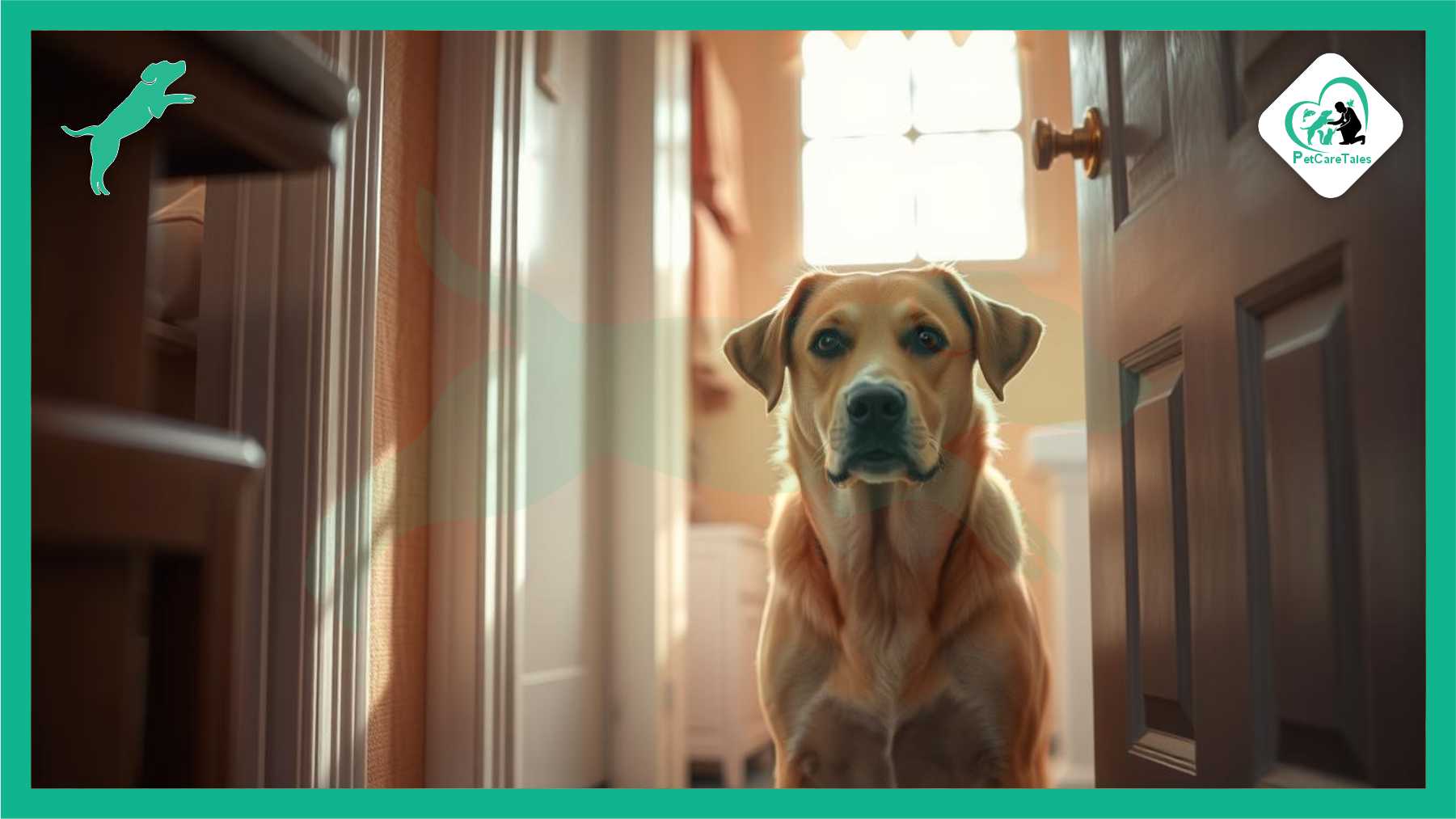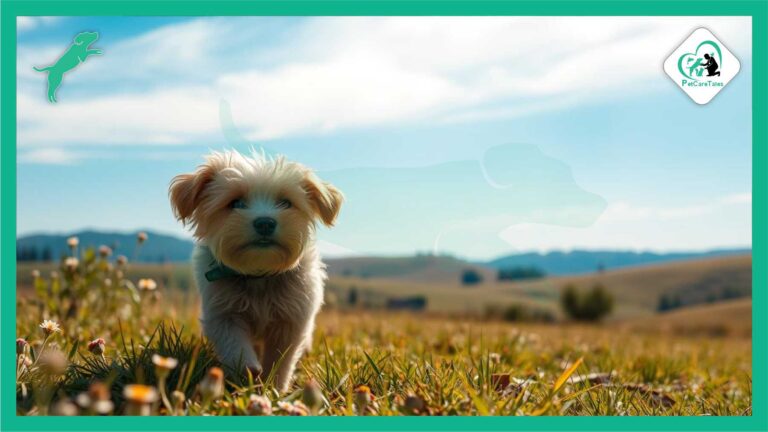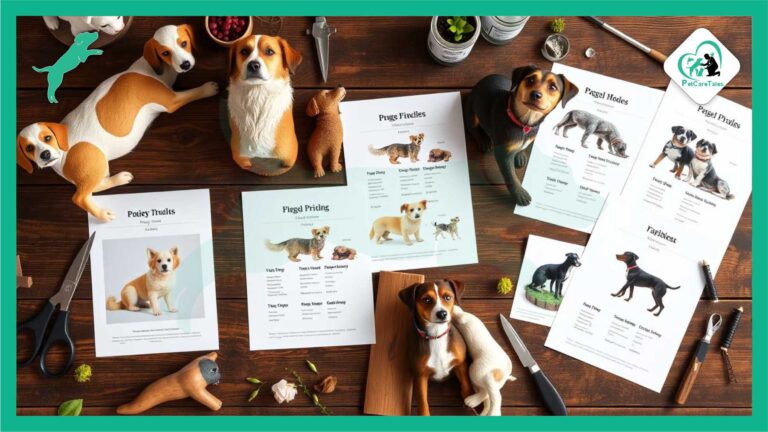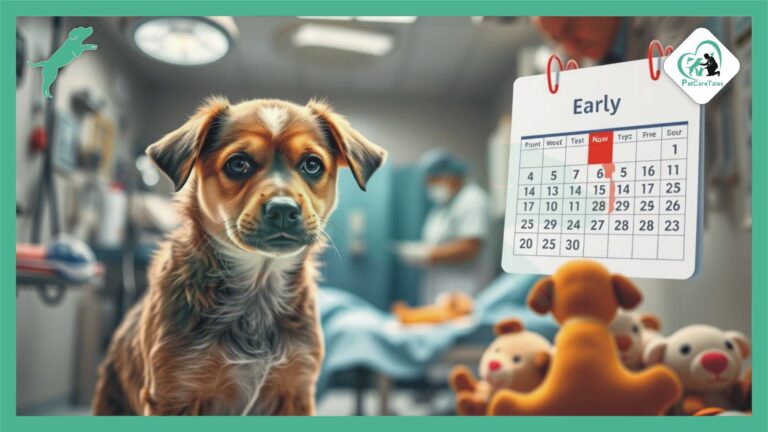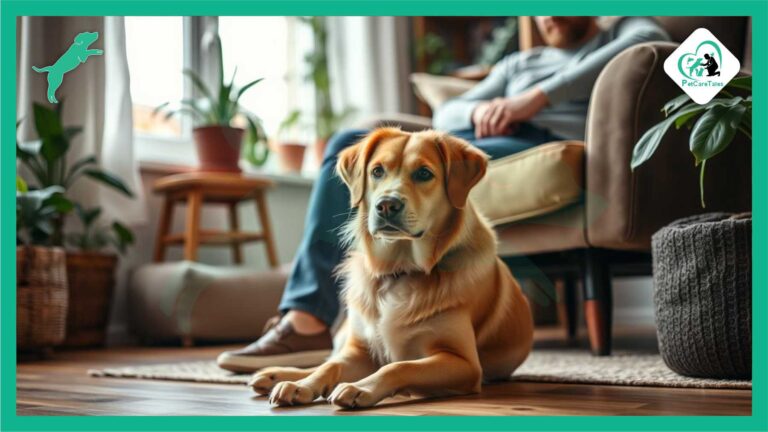Why Your Dog Stays Outside The Bathroom Door: The Truth Behind It
Why Your Dog Stays Outside The Bathroom Door: The Truth Behind It Did you know that about 34% of a dog’s time is spent with their owner in the bathroom? This shows a common, puzzling behavior of dogs waiting outside the bathroom door. It makes dog owners wonder about dog behavior and the reasons behind these pet habits.
Understanding why your dog waits outside the bathroom can make your bond stronger. It can also make your dog happier and healthier.
This behavior might mean different things, like wanting to be close or feeling anxious when alone. We will look into what makes your dog want to stay close. You’ll also learn how to help them be happy and independent.
Key Takeaways
- 34% of dogs’ time is spent with owners in the bathroom.
- 45% of dog owners report their dogs follow them into the bathroom.
- 22% of dogs show signs of separation anxiety when left alone.
- Dogs view their owners as their pack leaders, leading to close following behavior.
- Setting rules and routines helps promote independence in dogs.
- Understanding dog behavior can enhance the owner-pet relationship.
Understanding Dog Behavior
Dogs are social animals. Their actions show their feelings and thoughts. This is why they often wait outside the bathroom door.
Some dogs, like border collies and Labrador retrievers, follow their owners a lot. This is because they see their humans as part of their pack. Being with their pack makes them feel safe and happy.
Some dogs follow too much because they get anxious when apart. This shows they feel scared or upset when left alone. But, some dogs just follow because they trust and feel safe with their owners.
Different breeds have different behaviors. Some are clingier than others. Training can help if a dog follows too much.
Knowing about dog behavior helps owners understand their pets better. It’s important to consider their feelings and environment. This keeps everyone happy at home.
Pack Mentality and Canine Conduct
Understanding your dog’s pack mentality helps you see their canine conduct. Dogs are social animals. They need to stay with their pack for safety and love.
This need shows in their pet habits. Like following you everywhere or waiting by the door.
Without a clear pack, dogs might act out. Aggressive behavior can rise in homes with dogs. For example, a playful puppy might upset older dogs.
Male dogs often show dominance. This can cause problems. A Bichon faced aggression from Lhasas without a leader.
Emotions are key in how dogs act. Following you to the bathroom shows their attachment and fear. They seek comfort and safety in their pack.
Why Your Dog Stays Outside The Bathroom Door
Understanding why your dog stays outside the bathroom door shows their behavior and emotional needs. Dogs are pack animals. They want to be close for companionship and security.
This shows how connected they are to their human family. It’s a natural instinct for them.
Dogs as Pack Animals
Dogs follow their pack leader, which is usually you. This shows their loyalty and strong bonds with humans. They stay close to be part of the family’s daily life.
Waiting outside the bathroom door is their way of staying near. It shows they want to be with you.
The Need for Proximity
Dogs need to be close to their owners. They like to be near even when doing simple things. Waiting outside the bathroom door shows their closeness need.
It also shows they know who the pack leader is. Their presence brings comfort and stability to both of you.
Pack Leader Dynamics
Understanding pack leader dynamics helps explain your dog’s behavior. Dogs follow routines, waiting for you to come out of the bathroom. They watch everything, trusting you and their place in the pack.
Waiting at the bathroom door shows their desire to stay connected. They want to know where you are.
Separation Anxiety in Dogs
It’s important to know about separation anxiety in dogs to help them feel better. Some dogs act very clingy, which might look like they’re Velcro dogs. Knowing the signs of separation anxiety helps you help them.
Recognizing the Signs
Dogs with separation anxiety act out when left alone. They might:
- Urinate or poop when no one’s there.
- Bark or howl a lot, making a mess.
- Chew or dig on things they shouldn’t.
- Try to get out by chewing on doors or windows.
- Walk around in a pattern at home.
- Eat their own poop when alone.
Changes like new owners or moving can make dogs anxious. Look closely at these changes to see if they’re due to separation anxiety.
Differences from Velcro Dogs
Velcro dogs want to be with you all the time. But they don’t get destructive like anxious dogs do. Knowing the difference helps you figure out what your dog needs.
Reasons Dogs Follow You
Dogs follow you for many reasons. They seek comfort, security, and are curious. Knowing why they do this can make your bond stronger.
Seeking Comfort and Security
Your dog follows you for comfort and security. This is true for new dogs or puppies. They feel unsure in new places.
Some dogs, like Chihuahuas, always want to be close. Even older dogs may follow because of habits or health changes. They feel safe and belong when near you.
Curiosity and Exploration
Dogs are curious and love to explore. They follow you to see new things. Puppies do this to learn and feel brave.
As they grow, they may not follow as much. But dogs like Border Collies always want to be with you. Following lets them join in and stay interested.
Bathroom Privacy and Pet Habits
Many dog owners wonder why their pets won’t leave the bathroom. Dogs follow their instincts, which shape their actions. Breeds like border collies and Labrador retrievers often stick close to their owners.
Dogs don’t understand personal space. They see your presence as safe and comforting. This makes them want to stay near you, even in the bathroom.
Canine curiosity also plays a part. The bathroom is full of new smells and sights. Dogs love to explore with their owners.
Knowing why dogs act this way can ease worries about privacy. Their loyalty and affection are clear. Teaching them to wait at the door can help set boundaries.
The Role of Hormones and Boredom
Understanding hormones and dog behavior helps us see why pets act certain ways. Hormones affect a dog’s wants and actions. For example, intact dogs may want to play outside more because of hormones.
This is why indoor/outdoor pets might follow you or seem restless. It’s because of their hormones.
Hormonal Influences on Behavior
Hormones shape a dog’s behavior in many ways. Hormone changes can make dogs excited or anxious. This is especially true for intact dogs.
These changes can make dogs more interested in their surroundings. They might also mark more. Knowing about these hormone changes helps us understand mood and activity changes in dogs.
Combatting Boredom in Indoor/Outdoor Pets
Boredom makes dogs follow you, looking for fun. To fight boredom, try interactive play and brain games. Here are some ideas:
- Give puzzle toys or treat dispensers to keep their minds busy.
- Do obedience training to keep their minds sharp and learn new things.
- Go on regular walks to let them explore and meet other dogs.
By playing and engaging with your pet, you can stop boredom. This makes your pet happier and healthier.
Establishing Boundaries with Dog Training Tips
To have a happy home, teaching your dog is key. Setting rules helps them learn right behavior, like at doors. Being consistent and clear is very important.
Timing is also key. It helps your dog link good actions with rewards. Having someone else help during training is a good idea.
Teaching Door Etiquette
Door manners mean knowing when to enter or leave. Use signs like cones or tape to show where to stop. This helps your dog know the rules.
Keep a safe area around the boundary. This lets your dog learn without feeling rushed. When they stay back, praise them or give treats.
It’s important that everyone in the family agrees on this. This avoids confusing your dog.
Using Crate Training for Better Behavior
Crate training is great for setting rules. It gives your dog a cozy, safe place. Start by making the crate a nice spot.
Put your dog in the crate for short times with treats. This teaches them it’s okay to be alone. It also helps them feel safe.
Good crate training means your dog respects their space. This makes them behave better and keeps accidents down.
| Training Method | Key Features | Benefits |
|---|---|---|
| Teaching Door Etiquette | Visual cues, buffer zone | Improved door behavior, safer environment |
| Crate Training | Safe space, gradual introduction | Reduced anxiety, respect for boundaries |
Teaching your dog to respect rules makes them a good pet. It also keeps everyone safe. With dog training tips, your dog will do well.
Promoting Independence in Dogs
Making your dog feel independent boosts their confidence. It also cuts down on clingy behavior. Start by letting your dog spend more time in a safe place, like a crate or room. This shows them it’s okay when you’re not there.
To help your dog be more independent, try these:
- Short Separation Sessions: Begin with short times apart. Then, slowly make it longer as they get used to it.
- Safe Spaces: Make a cozy spot with things they know. It’s a nice place for them when you leave.
- Interactive Toys: Give them fun toys to keep their mind busy when you’re gone.
- Low-Key Departures: Don’t make a big deal when you leave. Keep it calm to lessen their worry.
Using these methods can make your dog feel better when you’re away. Training, even for just five minutes, helps them feel more confident. Use treats to make them want to learn and do good things.
Teaching your dog to be independent lets them enjoy their space more. It lowers their anxiety and makes your bond stronger. This way, they learn to trust and understand each other better.
Understanding Pet Psychology
Learning about pet psychology helps us see how dogs see the world. It’s key to making good times with them and keeping them happy. Knowing how dogs think helps us connect better with them, making our bond stronger.
How Dogs Process Their Environment
Dogs are very good at sensing things around them. They use their sense of smell a lot. This is why they might like to be near their owners in places with lots of smells, like bathrooms.
This is because dogs are pack animals. They like to be with their pack leader. This shows their loyalty and love for their family.
Encouraging Positive Behavior
It’s important to encourage good behavior in dogs. Knowing about pet psychology helps us teach them in ways that feel natural. We can reward them for good actions and gently steer them away from bad ones.
This way, we create a safe space for them to learn and grow. It makes them happier and more willing to listen to us.
Reducing Clinginess and Building Confidence
Learning how to handle your dog’s clinginess is key to their happiness. By using the right strategies, you can help them feel more confident. This makes it easier for them to handle being alone for a bit.
Creating a safe space is a big part of this. It’s where your dog can feel safe when you’re not there. This space should have their bed, favorite toys, and things to keep them busy.
Creating a Safe Space
A safe space is great for dogs who get anxious when alone. It should have their bed, toys, and fun things to do. This spot makes them feel safe and secure.
When they feel safe, they start to build confidence. You can help them see that being apart is okay. Just make sure to always give them positive feedback.
Exercising for Mental Stimulation
Exercise is key for dogs with separation anxiety. It helps them relax and not cling as much. Try playdates, puzzle toys, or training to keep them busy and happy.
These activities help them use their energy in a good way. It makes them feel better and more confident. This is good for their mental health and makes them a happier dog.
Establishing a Routine for Your Dog
Creating a stable home is key for your dog’s happiness. A routine with set times for meals, bathroom breaks, and play helps your dog feel safe. This routine reduces anxiety and makes your dog more confident and calm at home.
Having a regular schedule improves your dog’s behavior. It also means they won’t cling to you as much. This makes living together more fun for both of you.
Predictable Schedules and Security
Setting up a routine is vital for your dog’s safety. Dogs feel less stressed when they know what’s coming. Here are some tips to help you create a good routine:
- Bathroom Breaks: Puppies need to go out often. A 2-month-old puppy might need to go every two hours.
- Feeding Times: Feed your dog at the same time every day. This helps with digestion and potty training.
- Exercise: Regular walks and playtime are important. They keep your dog happy and healthy.
- Sleep Schedule: A consistent bedtime routine is good for your dog’s security. Most dogs sleep about seven hours without needing to go out.
Having a routine helps prevent accidents. Make sure to take your dog out right after waking, before and after being confined, and before bed. Watch for signs like sniffing or circling to know when they need to go.
If accidents happen, clean up with special cleaners to stop them from happening again. Praise and treat your dog when they go outside successfully. This builds their confidence. A routine with set times makes your home a safer and happier place for your dog.
| Time | Activity |
|---|---|
| 7:00 AM | Breakfast and bathroom break |
| 9:00 AM | Morning exercise (walk/play) |
| 12:00 PM | Midday bathroom break |
| 5:00 PM | Dinner and bathroom break |
| 8:00 PM | Evening exercise (short walk/play) |
| 10:00 PM | Final bathroom break before bedtime |
Other Solutions and Considerations for Your Dog’s Behavior
Understanding your dog’s behavior might need more than just basic training. Giving them visual stimulation and keeping their minds busy is key. This is especially true for breeds that love to follow their owners.
Providing Visual Stimulation
Visual stimulation can make your dog’s world more exciting. Toys that make them work for treats or play games keep them busy. This keeps them from following you everywhere, like into the bathroom.
Try toys with different textures and colors. This makes them curious and eager to explore.
Keeping Their Minds Engaged
Training your dog every day keeps their mind sharp. It helps them learn new things and stay focused. You can teach them commands, tricks, or even set up agility courses at home.
Use puzzle toys to challenge their problem-solving skills. Mixing visual fun with mental games makes their life richer. This helps solve dog behavior problems.
| Type of Stimulation | Description | Benefits |
|---|---|---|
| Visual Stimulation | Engaging toys and objects that capture attention | Reduces following behavior, encourages exploration |
| Mental Engagement | Training sessions and puzzle toys that challenge intellect | Enhances focus, builds new skills and confidence |
| Interactive Play | Games that involve both owner and dog | Strengthens bond, provides exercise and entertainment |
Using these methods helps your dog not need to follow you all the time. They become more independent and confident.
Conclusion
Your dog waits outside the bathroom door for many reasons. It could be because they feel close to you or have separation anxiety. Knowing why they act this way helps you bond better with them. Dog Stays Outside The Bathroom Door Many dog owners want to understand their pets’ actions. They have read over 22 million posts about this. This shows how important it is to know about dog behavior.
By using the tips from this article, you can meet your dog’s needs. Positive reinforcement and a routine can make your relationship better. Your dog’s actions show their feelings and needs. Remember, different dogs behave in different ways. Simple training can help them feel less clingy and more independent. Learning about dog behavior and training helps your dog live a happy life.
FAQ
Why does my dog always wait outside the bathroom door?
Dogs wait outside the bathroom because they are pack animals. Dog Stays Outside The Bathroom Door They love to be with their family and feel safe. This shows their instinct to watch over their pack leader.
What does it mean when a dog exhibits clingy behavior?
Clingy dogs might want comfort or feel scared when apart. Knowing why they act this way helps. It could be because they need love or have a bigger problem.
How can I distinguish between separation anxiety and normal clinginess in my dog?
Dogs with separation anxiety might get very upset when alone. They might also be very clingy. If your dog shows these signs, they might need help to feel better.
What training techniques can help my dog behave better around the bathroom?
Teach your dog to “stay” and use crate training. Dog Stays Outside The Bathroom Door These help set rules and keep them calm near the bathroom. It makes your home a happier place for both of you.
Why does my dog follow me everywhere, even to the bathroom?
Dogs follow because they’re curious or want to be with you. They feel safe and happy when close. It shows they love to explore and be with their pack leader.
How can I make my dog feel comfortable being alone?
Dog Stays Outside The Bathroom Door Start by leaving your dog alone for short times in a safe spot. Give them treats for being calm. Toys can keep them busy when you’re not there.
Do hormones affect my dog’s behavior when they follow me around?
Yes, hormones can make dogs more active, especially in males and females. Boredom also makes them follow more. Exercise and fun activities can help.
What role does dog psychology play in their bathroom behavior?
Dog psychology is key to understanding their actions. Dogs act based on feelings and instincts. Knowing this helps teach them good behavior and stop bad ones.
How can I create a routine that helps my dog feel more secure?
Dog Stays Outside The Bathroom Door Set regular times for food and play. A routine makes your dog feel safe and calm. It helps them adjust better to life.
What are some fun activities to engage my dog mentally and prevent boredom?
Try puzzle toys, games, or training. These keep your dog’s mind busy. It helps them not be so clingy and keeps them happy.
*Recommended articles:*

